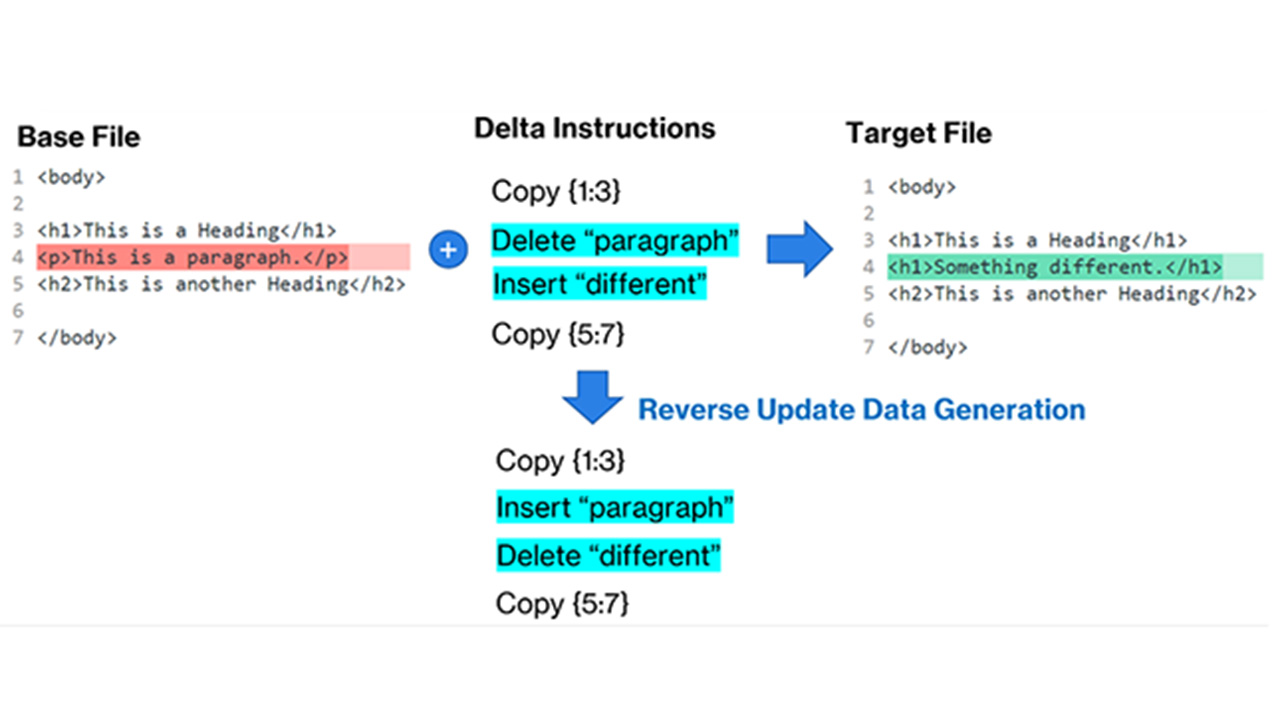How Microsoft Puts the Squeeze on Windows 11 Update Sizes
Compression is key
The size of Windows updates has long been a contentious matter, with complaints about how long the files, often hundreds of megabytes in size, take to download on normal, suburban, internet connections. A fascinating post on the Microsoft IT Pro Blog by software engineer Jonathan Ready tackles this, and details how Microsoft has been working to reduce the size of the update downloads.

It all comes down to new compression technology, which has allowed Microsoft to reduce the size of Windows 11 downloads by 40%. Ready, rapidly gets technical about the forward and reverse differential compression used in Windows 10 since version 1809, and why a bidirectional delta approach to compression gains very little efficiency.
The important thing was to cut download sizes without increasing installation time, or for IT managers to have to make configuration changes. The new versions of files have to be delivered to the target machine, and a path back to the original state needs to be kept so the patch can be reversed. This leads to both the new data and the old data being stored.
The new approach uses an ‘observation’ of the patch application step to generate the reverse path, meaning the data that would have been stored is no longer needed. As you might expect from the IT Pro blog, the language used is highly technical, but it’s an interesting window into the kind of thinking Microsoft is putting into Windows 11 essentially making it more user-friendly and easier on your bandwidth. With 20 million Americans living without high-speed broadband (and many, many more across the world), efficient patch distribution is an important step in keeping all our computers and networks secure.
Get Tom's Hardware's best news and in-depth reviews, straight to your inbox.

Ian Evenden is a UK-based news writer for Tom’s Hardware US. He’ll write about anything, but stories about Raspberry Pi and DIY robots seem to find their way to him.
-
Alvar "Miles" Udell If they really cared they'd make the monthly CUs easily available as an offline installer so people without broadband or unlimited broadband could download them at a public WiFi hotspot and install them on their own.Reply -
USAFRet Reply
In the Settings for updates, there is an option for 'metered connection'. Been there since Win 10 startedAlvar Miles Udell said:If they really cared they'd make the monthly CUs easily available as an offline installer so people without broadband or unlimited broadband could download them at a public WiFi hotspot and install them on their own.
The reason Win 10 Updates happen automatically is due to issues with earlier Windows versions and it being "optional".
Many many problems resulted from that.
Hence...updates get pushed. -
DerKeyser While size matters, think about how MS is KILLING the planet with the way they deliver updates. Every windows computer on the earth spends endless time with one or more cores @ 100% load to do .Net core optimization after updates. If they figured a new way to deliver fully compiled and adapted updates to the different platforms, my guess is we are looking at saving power on a monthly Terra watt scale World wide.Reply -
USAFRet Reply
"endless time" ?DerKeyser said:While size matters, think about how MS is KILLING the planet with the way they deliver updates. Every windows computer on the earth spends endless time with one or more cores @ 100% load to do .Net core optimization after updates. If they figured a new way to deliver fully compiled and adapted updates to the different platforms, my guess is we are looking at saving power on a monthly Terra watt scale World wide.
Currently, My Win 10 Pro system (specs below)
CPU @ 36%
2x large Excel files open
2x Firefox instances, with a dozen or so tabs each
2x VMs...1 Win 10 Pro and 1 Linux
File Explorer
Multiple txt files open in Notepad
Video from 2x cameras in the Reolink client
TinyVNC to my HTPC
"endless" ?
hmmmmm...lets not go over the top with hyperbole. -
Alvar "Miles" Udell ReplyUSAFRet said:In the Settings for updates, there is an option for 'metered connection'. Been there since Win 10 started
The reason Win 10 Updates happen automatically is due to issues with earlier Windows versions and it being "optional".
Many many problems resulted from that.
Hence...updates get pushed.
Yes it is, but it doesn't resolve the problem of people on slow speed and/or data limited connections still having to eventually download them, and there's no easy offline installer that they can download on their phones or laptops on a public WiFi for installation on their desktops. The closest it gets is "download from other PCs on my network" which doesn't work right, never has. -
USAFRet Reply
You can pause updates from a week to a month (depending on which Win 10 version)Alvar Miles Udell said:Yes it is, but it doesn't resolve the problem of people on slow speed and/or data limited connections still having to eventually download them, and there's no easy offline installer that they can download on their phones or laptops on a public WiFi for installation on their desktops. The closest it gets is "download from other PCs on my network" which doesn't work right, never has.
When you DO have a good connection, do it then.
Downloading on a phone and then transferring to the PC?
You and I might be able to work with that, but the vast majority of users would screw it up. -
Alvar "Miles" Udell ReplyUSAFRet said:You can pause updates from a week to a month (depending on which Win 10 version)
When you DO have a good connection, do it then.
Downloading on a phone and then transferring to the PC?
You and I might be able to work with that, but the vast majority of users would screw it up.
Spoken like someone who has never been on slowspeed or a severely data limited connection.
And no, it's not hard even for a novice to move an offline installer package from a phone or laptop to a desktop. -
USAFRet Reply
hahahaha...Yes I have.Alvar Miles Udell said:Spoken like someone who has never been on slowspeed or a severely data limited connection.
And no, it's not hard even for a novice to move an offline installer package from a phone or laptop to a desktop.
More than you know.
But whatever...is this an actual problem that needs to be solved?
Download on the phone, because it is faster?
Instead of a convoluted 2 step process, why not tether the PC to the phone and do it (mostly) directly. -
Alvar "Miles" Udell ReplyUSAFRet said:hahahaha...Yes I have.
More than you know.
But whatever...is this an actual problem that needs to be solved?
Download on the phone, because it is faster?
Instead of a convoluted 2 step process, why not tether the PC to the phone and do it (mostly) directly.
Because if you have slowspeed or Viasat/Hughesnet internet at home, then you have no option to use cell internet, so tethering to a phone is not an option. -
InvalidError In short: Microsoft has re-discovered bindiff as a method of syncing mostly identical binary files.Reply
The baseline load on my i5-11400 is about 6% and 2% of that is Task Manager showing me CPU usage, the rest is 0-2% divided between dozens of background processes.DerKeyser said:While size matters, think about how MS is KILLING the planet with the way they deliver updates. Every windows computer on the earth spends endless time with one or more cores @ 100% load to do .Net core optimization after updates. If they figured a new way to deliver fully compiled and adapted updates to the different platforms, my guess is we are looking at saving power on a monthly Terra watt scale World wide.
The reason .NET stuff gets locally re-compiled is to optimize stuff for your specific PC over time instead of picking from 4-5 pre-compiled binaries, none of which may be optimal for your hardware configuration.
Pause or block updates on your PC, write down every patch number that is pending, look up those patches and download them to whatever device you have unlimited internet on, then transfer them to your PC(s) and run them.Alvar Miles Udell said:Yes it is, but it doesn't resolve the problem of people on slow speed and/or data limited connections still having to eventually download them, and there's no easy offline installer that they can download on their phones or laptops on a public WiFi for installation on their desktops. The closest it gets is "download from other PCs on my network" which doesn't work right, never has.
There are patch downloader tools like WSUS Offline if you want some help automating at least part of the process.